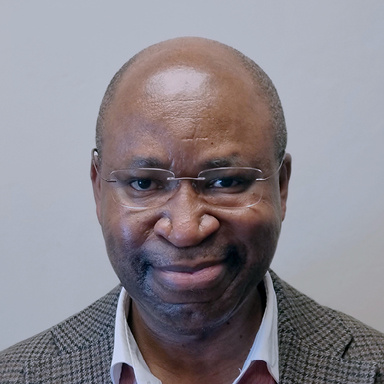On 22 March 2025, Dr Dennis Agbazue, an orthopaedic surgeon at Mediclinic Vereeniging, carried out Gauteng's first fully endoscopic lumbar spinal decompression and fusion. He describes the benefits of these techniques.
Dr Agbazue is one of the few spinal surgeons in South Africa who performs both uni-portal and bi-portal endoscopic spinal surgeries. He started practising the uni-portal technique in 2022 and has since used it for around 330 cases.
“We’ve recently also begun using the bi-portal technique, using a camera portal and a working portal,” he explains. “We’re able to do more extensive surgeries with this technique,” he explains.
Dr Agbazue says is one of the least invasive ways to perform this type of surgery. The procedure involved a bi-portal endoscopy on the L4/L5 lumbar spine, along with a bilateral laminectomy to relieve pressure on the spinal canal and surrounding areas, as well as a disc removal and spinal fusion.
The surgery, performed on a 55-year-old man from Vaalpark, was done using endoscopic techniques, where the lumbar spine, spinal stenosis, and lateral recess were all treated in one procedure. “We released the pressure on the central part of the spinal cord and the left and right corners,” Dr Agbazue explains. They then performed a fusion to address the spinal instability.
The patient had a condition called spondylolisthesis, where one vertebra slips over the one below it. In this case, the L4 vertebra was slipping over L5. This caused spinal stenosis and pressure on the nerves.
“He experienced back pain and cramps down both legs, making it hard for him to bend, stand, sit, or walk for long periods,” says Dr Agbazue. “As an engineer, he was struggling with daily tasks and his work.”
Understanding endoscopic surgery
Spinal endoscopic surgery treats spinal problems through one or two small cuts on the patient’s back. “We use X-ray or fluoroscopy to guide us to the right spot,” says Dr Agbazue. “The camera reaches the area we need, approaching the spinal canal to find the problem.” This allows surgeons to access the area and remove bone, ligaments, and damaged disc material that are pressing on the spinal cord and nerves.
“You then relieve the pressure with another portal,” explains Dr Agbazue. “By feeling the pressure on the nerve, you can ease the compression causing the back and leg pain.” In most cases, this provides the patient with immediate relief from pain.
“You can do fusion through this working portal of the camera, which is about 2cm large, a procedure that previously would have been done through a big gap created through open surgery. So, it offers a massive advantage to the patient.”
Improved patient outcomes
Dr Agbazue says the patient’s hospital stay is shortened by 24 to 48 hours. This leads to a quicker return to work and a better quality of life. “The patient doesn't feel like much has been done to them because the procedure is so minimally invasive,” he adds. “The patients do very well.”
The alternative to endoscopic surgery is open spinal surgery. “With open surgery, recovery takes about six weeks,” explains Dr Agbazue. “In keyhole surgery, we don't cut through tissues. Instead, we use small openings to insert the camera and tools. Since the soft tissues aren't affected, recovery is faster, and pain control is better.”
Helping more patients
Endoscopic surgery is especially helpful for patients with a high BMI. “With endoscopic surgery, there are less restrictions. You can operate on most patients who are fit for surgery. Offering these surgeries at Mediclinic Vereeniging has helped increase the hospital’s visibility. “Many patients are coming, and the news is spreading, even abroad,” says Dr Agbazue. “For patients who prefer not to have traditional surgery, the new technology at Mediclinic Vereeniging is helping us become a centre of excellence for spine care and procedures.”
Further publications on the topic
Doctors 1


